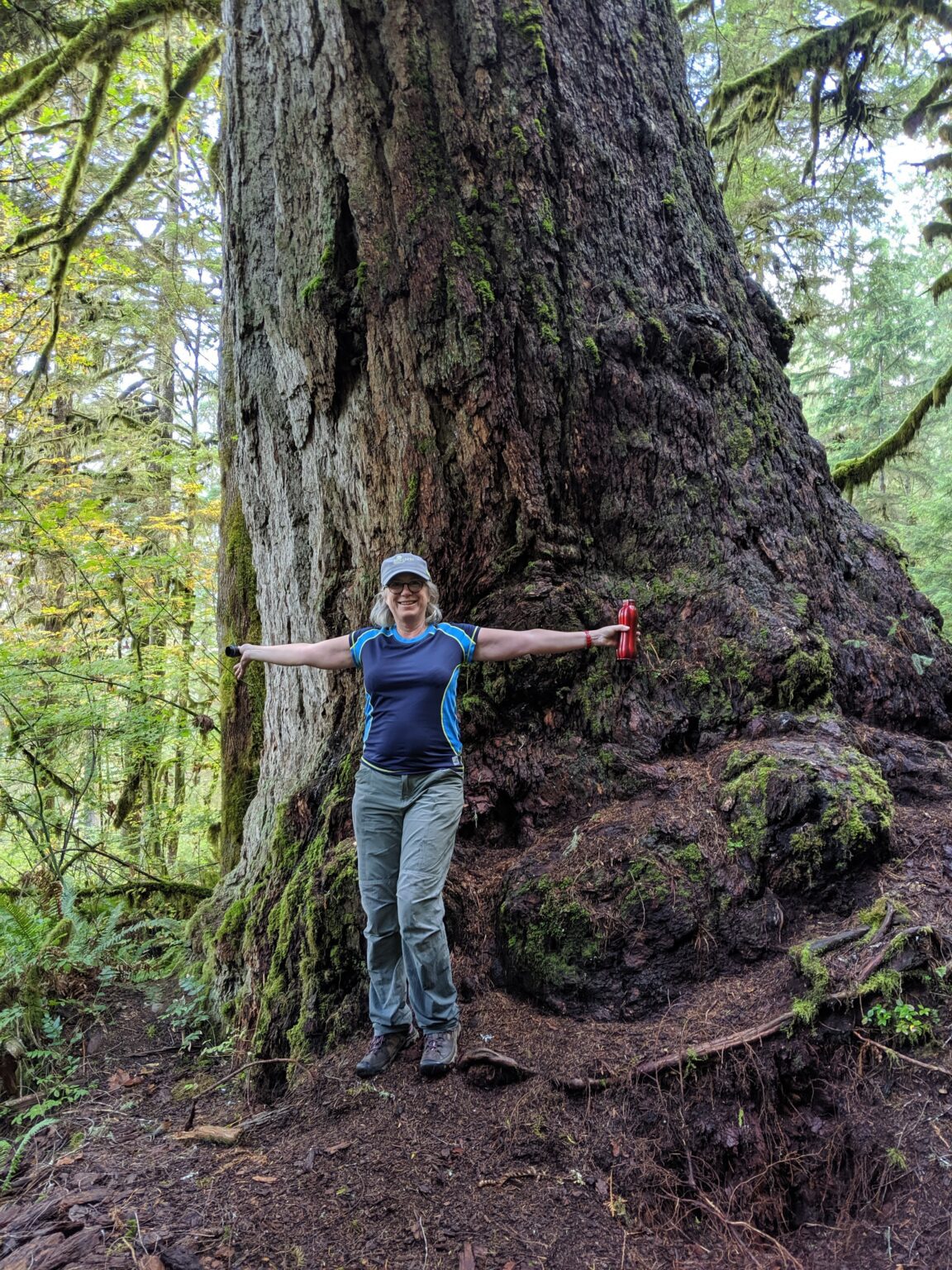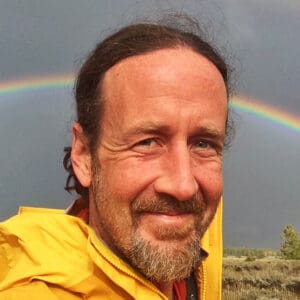We here in Cascadia know the forests that surround us are many things: places of refuge and play; home to countless critters that crawl, climb, slither and fly; nurseries of plants and fungi; medicinal cabinets of natural remedies; and sacred temples of filtered light where we can momentarily escape the pressures of the modern world.
We love our forests, and they love us right back. Forests collect and filter our prodigious amounts of rainfall, storing and then slowly releasing it as filtered water to the streams and rivers we depend on for drinking, agriculture, hydropower, fisheries and more.
Not only do forests provide us with clean water to drink, they also gift us air to breathe. And recent studies are showing that trees — by absorbing atmospheric carbon and storing it in their living wood, roots, leaves, deadwood and soils — are on the front-line defense against climate change.
Local author Jane Billinghurst has a goal to not only get more people out into the forest, but also to provide us with ways to deepen our explorations in these leafy realms. Her new book “Forest Walking: Discovering the Trees and Woodlands of North America” — written with Peter Wohlleben and published in May by Greystone Books — is especially for those just beginning to explore forests and wanting to learn more about the hidden processes underfoot and overhead.

Billinghurst has lived in the Pacific Northwest since 2004, when she moved to Anacortes to retire. But instead of easing into a life of leisure, she began a new career translating books from German, including the works of Wohlleben, a German forester and ecologist. His 2016 book “The Hidden Life of Trees: What they Feel, How they Communicate” was a worldwide phenomenon, selling more than 2 million copies and serving as the basis for a documentary film.
“Forest Walking” includes chapters such as “The Beauty of Bark,” “The Importance of Decay,” “Spotting Wildlife” and “Finding Beauty in Small Things.” Every page is full of surprising facts, recent scientific discoveries and easy-to-follow descriptions of the many different processes found in wild woodland. It also has sections on how to introduce and interpret the forest for children, and many age-appropriate activities for young people.
“Peter is an expert in how forests work and has a wealth of experience working as a forester in Europe,” Billinghurst said. “I contributed (to the book) by being a relative newbie traveling through and being amazed by the vast variety of forests to be found in North America.”
Indeed, Billinghurst’s other vocation since relocating has been immersing herself in the wonders of nature in the Pacific Northwest.
“I never cease to be amazed by the variety of landscape right on my doorstep,” she said, “from the ocean and islands to the mountain ranges that lead to the desert landscapes east of the Cascades. I appreciate them all.”
Billinghurst is an ardent fan in particular of the Anacortes Community Forest Lands — 2,950 acres of forest lands within city limits that include more than 20 miles of trails providing access to woods, lakes, wetlands and meadows. And she doesn’t rush her explorations.
“I am definitely more attuned to the wonders of local nature and all the things one can observe if I slow down and really look,” Billinghurst said. “Each time I go out into the forest, I learn something new and realize there is so much more I know nothing about … yet.”
Through the experience of writing and researching the new book, Billinghurst’s understanding of the complex nature of forests has evolved.
“I am more and more aware of how forests are not just a collection of trees but dynamic ecosystems in which all the parts interact with and contribute to the whole,” she said. “Each and every animal and plant has a role to play. Also, each forest is unique with its own community of animals and plants. The forests I know best around Anacortes are different from the ones around Bellingham and different yet again from the forests to be found in the Cascades. Forests are so perfectly adapted to the environments in which they grow and it is a joy to get to know the differences between them.”
In “Forest Walking,” Billinghurst wants others to experience the magic and mystery of our local woodlands, too.
As part of the Nature of Writing series with Village Books and the North Cascades Institute, Billinghurst will talk about how to find forest treasures hidden in plain sight at 6 p.m. Tuesday, June 14 during a Zoom discussion and during a forest walk at 10:30 a.m. Saturday, June 18 in Bellingham at the Hundred Acre Wood. Advance registration is required. Info: villagebooks.com/event.





